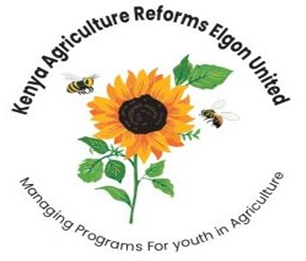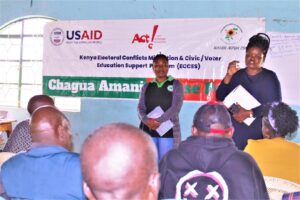Kareu Mpya is currently implementing the Resilience, Peace and Stability (RPS) development Engagement for the period 2021 to 2025. The program is funded by the Royal Danish Embassy through Act Change Transform (Act!) and seeks to address violent extremism, natural resource and political conflicts in select counties in Kenya.
The engagement is closely aligned with Denmark’s priorities and objectives in Kenya, as defined in the Strategic Framework for Kenya for the period 2021-2025, and with Kenyan Government’s objective and plans. Denmark supports Kenya’s effort in prevention and countering of political conflicts, violent extremism and natural resource based conflicts.
According to the Biodiversity Status of Mt. Elgon Forest Ecosystem Report (2018), Mount Elgon Forest Ecosystem is one of Kenya’s five major water towers and the second highest mountain in the country. It is an important catchment for River Nzoia which drains into Lake Victoria and River Turkwel which drains into Lake Turkana. It is also the source of River Malakisi, which flows from Kenya into Uganda. The forest ecosystem is a biodiversity hotspot of global significance, supporting several endemic plant and animal species. It was declared a Biosphere Reserve by UNESCO in 2003 in recognition of its significance as a water tower and biodiversity reservoir. The ecosystem is gazetted as a montane forest reserve (73,705 ha) managed by the Kenya Forest Service, a national park (16,916 ha) managed by the Kenya Wildlife Service and a nature reserve (17,200 ha) managed by Bungoma County Government.
The reports further indicates that over the years, the area surrounding the forest ecosystem has experienced a surge in human population mostly as a result of immigration, increasing the human population density to about 600 people/km2 . A majority of these are poor peasant farmers who depend on the forest for most of their subsistence needs. Consequently, most of the households that live 0-3 km from the forest have converted large swaths of the mixed montane forest that borders community land into farmland significantly reducing the forest cover. The situation has led to considerable levels of forest disturbance and degradation, which have significantly affected the floristic and structural composition and water catchment functions of the forest ecosystem. It is suspected that loss of forest cover may have adversely impacted the ecosystem’s faunal diversity as well, but there is no empirical data to support this.
Land, Water and forests among other natural resources have been the major causes of conflicts in Mt. Exacerbated by the dynamic political interests that led to the establishment of the Sabaot Lands Defense Force (SLDF) in 2006-2008 and subsequent killing of more than 3,000 people, massive displacement and destruction of properties. The RPS Project under KAREU MPYA with the support of the partners is carrying our strategic programs and activities to resolve conflicts arising from these God-Given resources for sustainable peace development.


